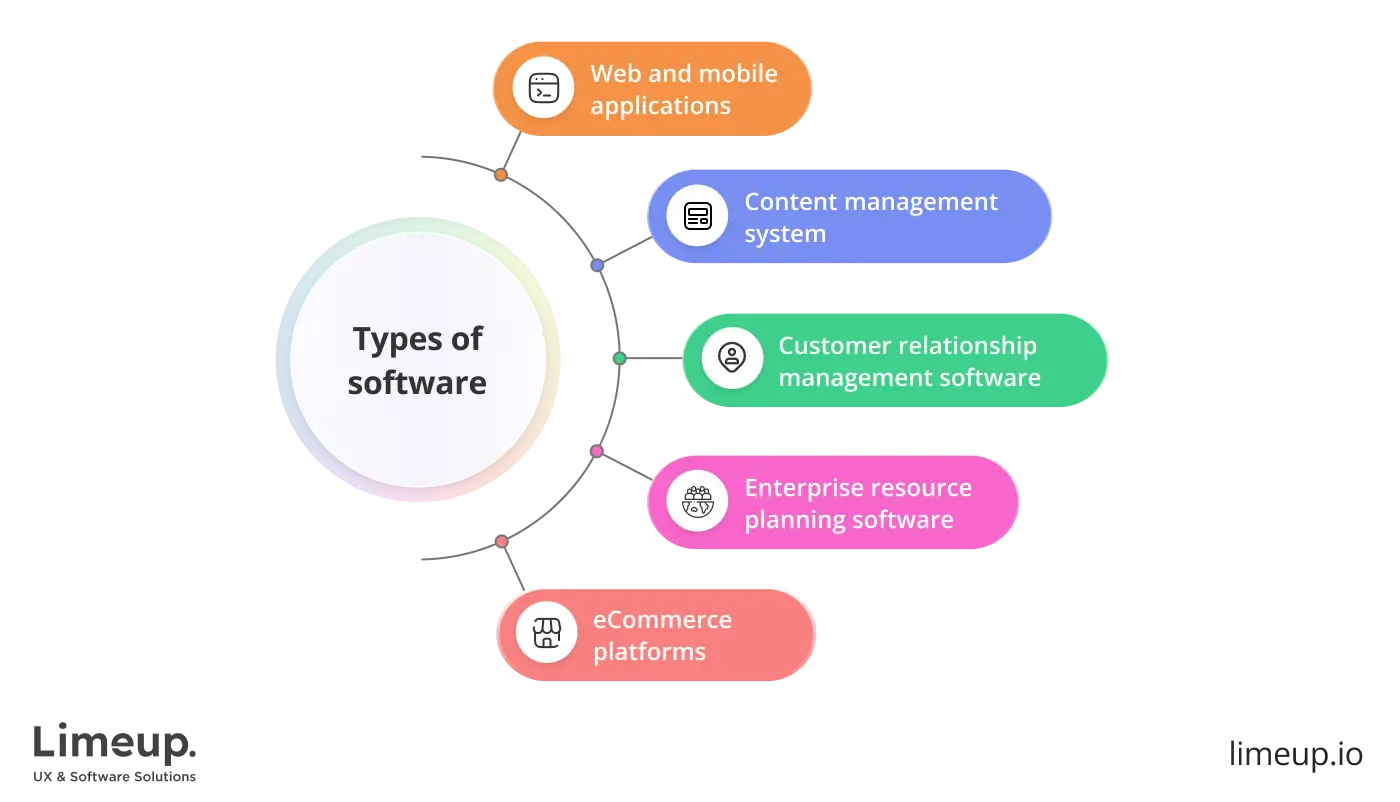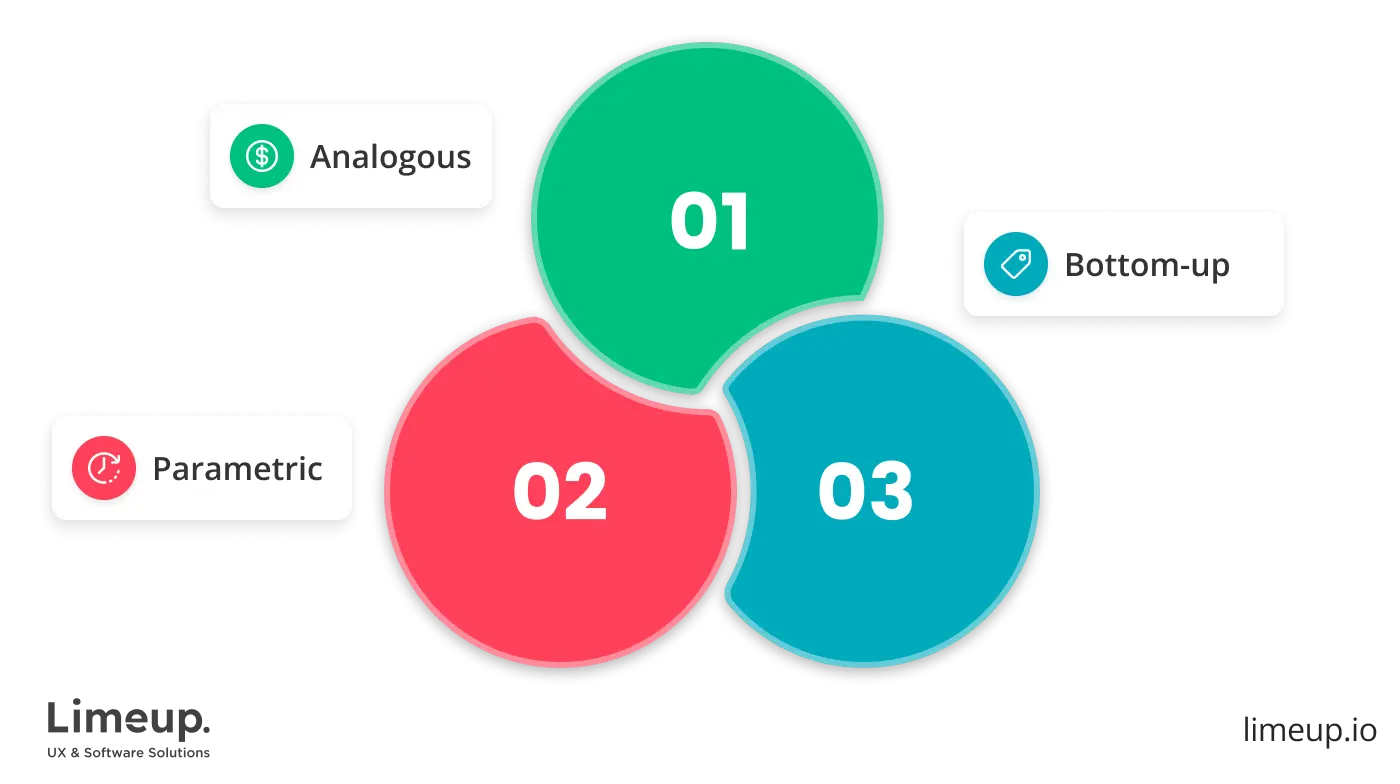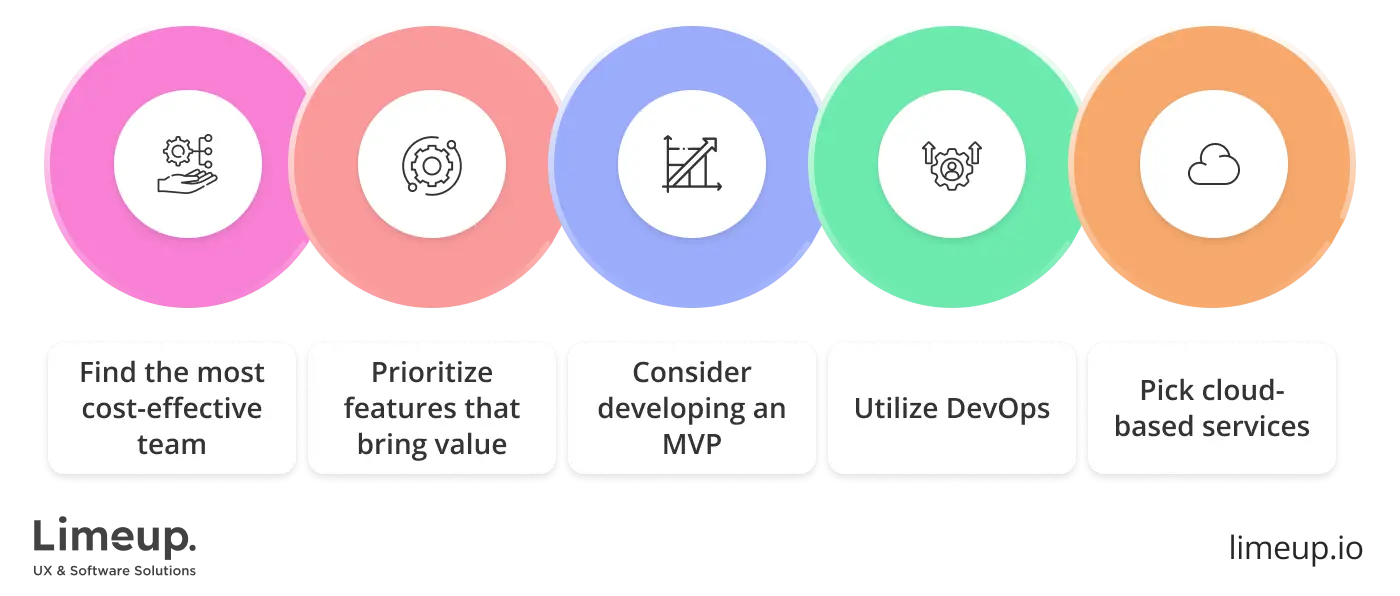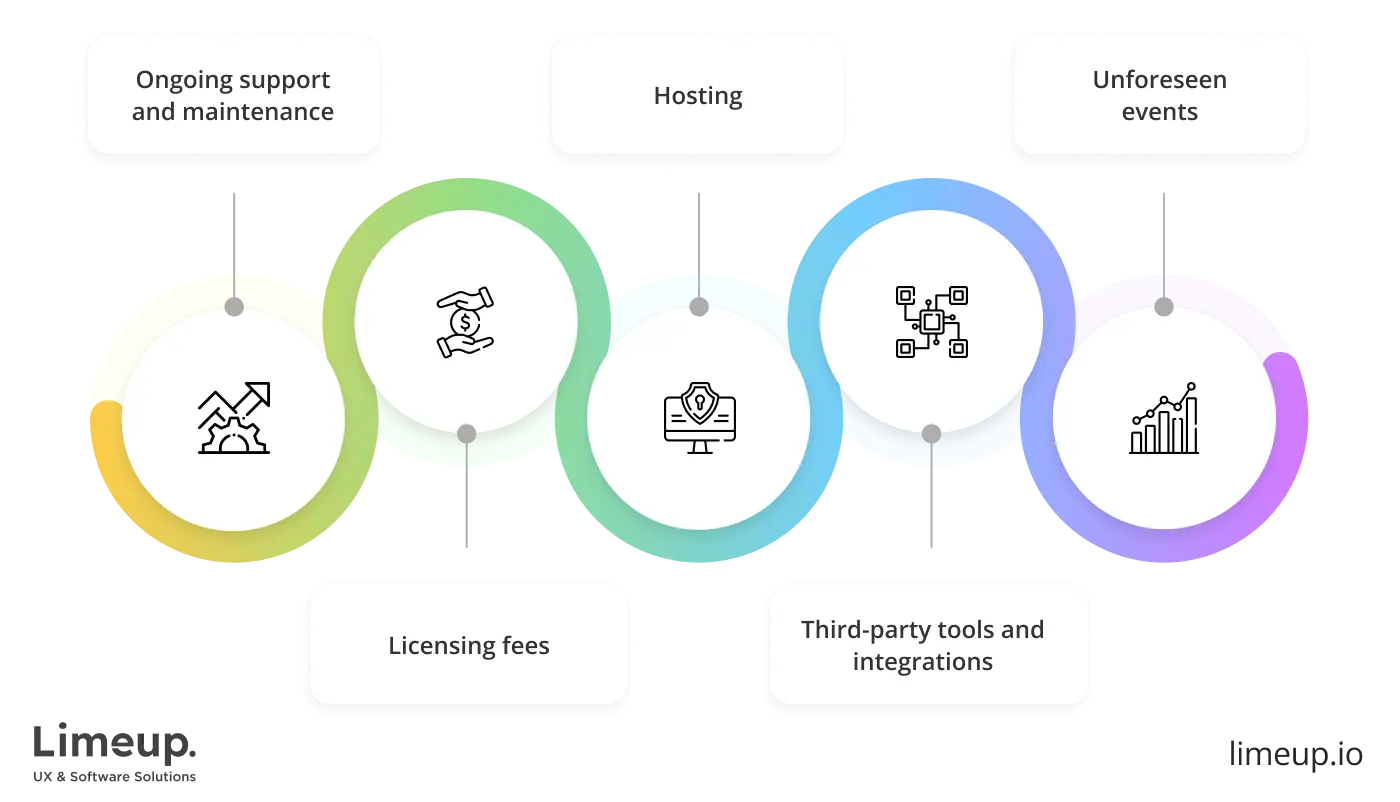Software Development Cost: Comprehensive Overview

Getting the software development cost right is a nail-biting task for any client since you have to take into consideration every small detail that adds up to the fee. For a startup planning to launch an MVP in 2026, getting the budget right can mean the difference between product-market success or running out of runway. That’s why understanding every financial component before development begins is absolutely essential.
Building your solution in the United Kingdom can present you with a myriad of widely-ranging charges, making the process of narrowing down your numbers all the more complicated.
Using our expertise in the field, we are here to lift the curtain of secrecy regarding the software development price, explaining the nitty-gritty behind quote formation and every nuance you need to know.
By the end of this read, you’ll have the essential tools and knowledge to estimate your budget accurately. If you’re ready to move forward, explore our custom software development services tailored for businesses in the UK.
Which factors are influencing software development costs?
Clients searching online for the answer to that one burning question about how much their software would cost is completely natural but in most cases yields little to no results. That is because no two projects are identical and analogizing projects with a different set of requirements is like comparing apples to oranges.
So to start off this deep exploration of costs, we want to first look at some of the fundamental factors that play the biggest role in shaping the budget.

Depending on the kind of software you want to have developed, the set and the number of features may look different. For example, aside from the core features you also want to have analytical and data-tracking capabilities that are typically not necessary for the type of the project which is ultimately raising the software development pricing.
As with any aspect in life, if you need to receive more, you are going to pay more, a simple quantity equation. And it is not generally a question of adding expensive features but more so about the additional work hours that specialists have to spend to complete the solution.
Besides the quantity of functions you wish to see in your software what pushes the prices up further is their complexity. To continue with the example above, let’s say you want those analytical tools but not the standard ones — you want them to include predictive AI analytics.
So you can see how one type of a feature can have various levels of complexity behind it and it can span across all of the functionality within the software. Here is where the outcomes in costs start to differ; one project with limited functions but high complexity is already a different quote compared to a project with lots of simple features.
Another major factor that fluctuates the cost of software development even more is the customization of your solution. Let’s persist with the example, shall we? When planning for your project, you have two options in terms of developing a feature: you can use pre-made code and integrations to achieve those same analysis tools or ask your provider to program it from scratch so it is entirely unique.
Customization of any part of the solution takes longer in terms of timelines as well as requires specific expertise which can cost more on the market of vendors as you pay for professional experience.
Although design is considered to be a part of overall development, we can’t neglect the fact that its uniqueness is factoring into the price as well. It is not only a matter of visual design which can either be built from the ground up using your directives or implemented with existing templates.
It extends to the user experience that can be created custom using research methods to craft seamless user flows and information architecture which delivers more enjoyable interactions but ultimately spikes up the fees.
What is the average cost of software development?
Having been equipped with the knowledge that you can’t just point the finger at a type of software and ask about its general cost, we can move forward to a more nuanced discussion and actually put some numbers to a name. Since there is a multiplicity of software systems to be created we are going to be focusing on a few of the most widely requested types.
The services are pulled from the leading software development companies in the UK and consequently, costs are based on the range of hourly fees, minimal project budgets and general statistics of the end charges.

So, how much does custom software development cost using average ranges? Let’s turn our attention to the table below.
| Type of software | What it means | Average prices |
| Web and mobile applications | Applications accessible through web browsers providing functions over the internet or on mobile devices like smartphones and tablets using operating systems such as iOS and Android for a variety of purposes | £50,000-£250,000 |
| Customer relationship management software | Software for managing interactions with customers, enabling the storage and centralization of customer data including sales, purchase history, personal information, preferences and more | £20,000-£150,000 |
| Content management system | Software for managing the content on websites that features abilities like creating, editing, posting, modifying content, etc., with user-friendly tools driving efficient delivery of digital media | £30,000-£170,000 |
| Enterprise resource planning software | Multi-faceted software used to store and manage core business data, including anything from manufacturing to accounting, ultimately streamlining work processes and boosting operational efficiency | £80,000-£300,000 |
| eCommerce platforms | Solutions aimed at facilitating retail operations with functionality covering sales, product postings, shopping carts and even customized payment gateways and transaction processing | £50,000-£200,000 |
As you can see the ranges of software development cost in the UK are vast and encompass every detail that influences the charge we have talked about before. So, narrowing down these prices to get a more properly estimated fee is going to take either a lot of planning and calculating or simply scheduling a consultation with a development provider and requesting their viewpoint on the price.
While average project prices give you a rough estimate, it’s equally important to understand how that budget is typically distributed across different stages of the software development lifecycle.
The following breakdown illustrates the average percentage of the total budget allocated to each development phase. Keep in mind these numbers may vary depending on the complexity and methodology of your project.
| Phase | Average % of Total Budget | Description |
| Discovery / Research | 10–15% | Business analysis, requirement gathering, wireframes, prototyping |
| UI/UX Design | 10–20% | Visual interface design, user flows, interactive mockups |
| Development | 40–60% | Core coding, database structure, API integration |
| QA & Testing | 10–15% | Manual and automated testing, bug tracking, stability checks |
| Deployment | 5–10% | CI/CD, server setup, hosting, production release |
| Maintenance (annual) | 15–20% of dev budget | Ongoing updates, bug fixes, user support |
With that being said, we have not yet exhausted the topic completely so let’s move on to additional practical advice on how you can figure out a more precise budget for your solution.
What are the software development budget estimation methods?
It would be a case of being at your wit’s end if several methods of assessing the prices of projects didn’t exist but luckily they do. While they may not be a solution to the problem of getting a totally exact quote, they are a helpful tool for planning your budget realistically and not finding yourself biting your nails when you expect lower fees. So what are they?

An analogous estimation method is considered the least time and energy-consuming yet requires very specific conditions to be met. In a nutshell, this approach compares another software development fee for a project that is as similar to your vision as possible, basically enabling you to see how much expenses were made on one solution, giving you an insight into how much yours can end up being.
The downside of this approach, however, is that if you lack information about equivalent types of projects, your calculations end there. Alternatively, you may run into the issue of calculating without inflation or market shift in mind which can result in inaccurate estimations.
A parametric practice involves thoroughly collecting information about your project, such as the details that influence the cost we have talked about (number of features, their complexity, etc.) as well as data about the charges development vendors put out, like hourly fees, and calculating how much time it would take to develop, adding that up to the price of services.
This could be a fairly precise method if you have an exhaustive understanding of what functionality you need without the probability of changing requirements. Where this practice fails is in a situation where you cannot fully estimate the scope of work or its complexity cannot be accurately represented within the services.
A bottom-up assessment of the cost for software development is possibly the most detailed and highly accurate method but it tends to consume a lot of time on research and planning. Essentially, you break down your project into several stages that contain a predefined amount of tasks necessary to finish the process, calculating the monetary resources needed.
The flexibility of this method is also demonstrated in the fact that you can estimate as minimally or as extensively as you need, giving you either a low end of the price or, conversely, a high end. The cons? It can take a lot of time and expertise to break down the project correctly while still retaining the risk of inaccuracy.
With this in mind, you can identify which approach suits your objectives the most and try to come up with an assessment of fees on your own. For now, we need to consider another side of the charges coin.
Tips for reducing software development price
Now that we have thoroughly gone over the most critical points that can and will define your project budget, it is time to take a breath from the overwhelming information and ponder about the methods you can utilize to minimize your expenses.

Here is some food for thought.
This may come across as a “Duh” moment but hear us out: cheaper does not always mean worse quality and expensive is not always guaranteeing outstanding results. Find a provider with a reputable track record and expertise in your niche that simultaneously has a suitable software development pricing model using which you won’t go broke.
It can seem like an impossible task, but it’s not, it just takes extra time for research and preparation.
Building your own software can bring a storm of ideas, all of which might seem an absolute must for success. In reality, users are not typically looking for an all-purpose solution but rather a solution that adequately solves their problems and provides an enjoyable experience.
Try to focus on the essential core value of your software and define it to perfection, ultimately streamlining the process and eliminating scope creep.
If you desire to lower the initial cost of software development, then going the minimum viable product route is the way to go. Commonly, businesses like startups are recommended to create an MVP first which encapsulates only the core functionality of the software to test the product’s viability with real users and continue building the features from that point.
Such an approach can substantially cut down the programming costs at the beginning since you will only be developing a limited set of functionality, helping you manage your budget as you go. Startups that begin with an MVP approach are 2.2x more likely to secure follow-on funding, according to CB Insights.
Automation is a new kid on the block when it comes to streamlining development and with the ability to leverage continuous integration (CI) as well as continuous delivery (CD), you can free up the space to reach a faster time to market.
What it essentially entails is that you can automate repetitive tasks such as testing, deployment and other processes to minimize human error and the resources needed to fix mistakes.
Lastly, a widespread way to decrease software development costs is to opt for cloud computing since it is a sure-fire way to avoid investing in physical hardware like servers as well as it helps to manage infrastructure more effectively. You will be able to scale your software as you see fit without compromising large expenditures.
As of 2024, Statista’s research shows that Amazon Web Services (AWS) is the most popular cloud platform with 48% of developers choosing it over other options. The value is definitely there and this approach is a practical way to make the solution more budget-friendly.
In conclusion
Just like we promised, you have reached the end of exploring the topic of the software development budget and should now be equipped with robust information about how to approach your calculations. We have explained the factors that make up the price, average ranges, estimation methods and hidden fees as well as gave you tips to decrease expenses.
We want to conclude on the note that this guide helps you narrow down the vast sea of software development cost for your specific solution, yet the best way to get a hold of the correct quote is to reach out for consultation. At Limeup, our battle-tested team is always ready to deliver outstanding software and answer any of your questions.


